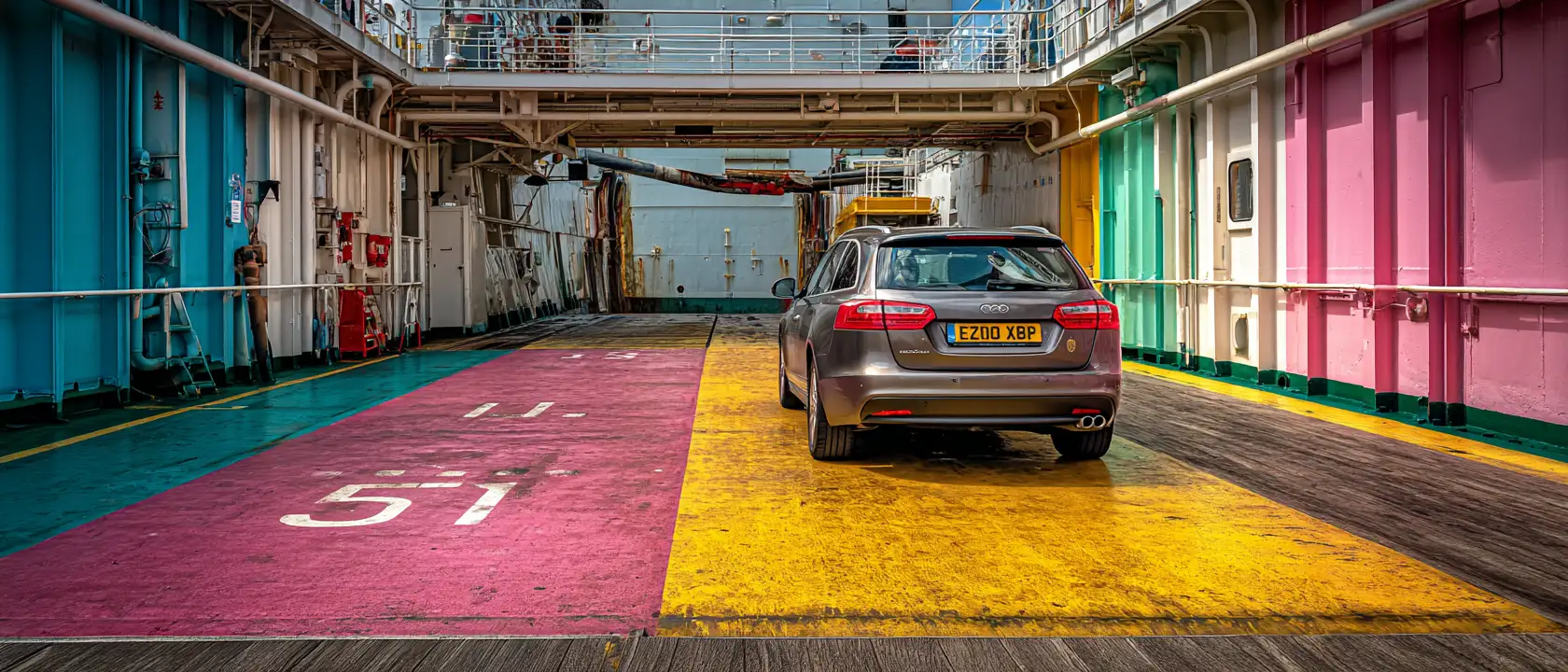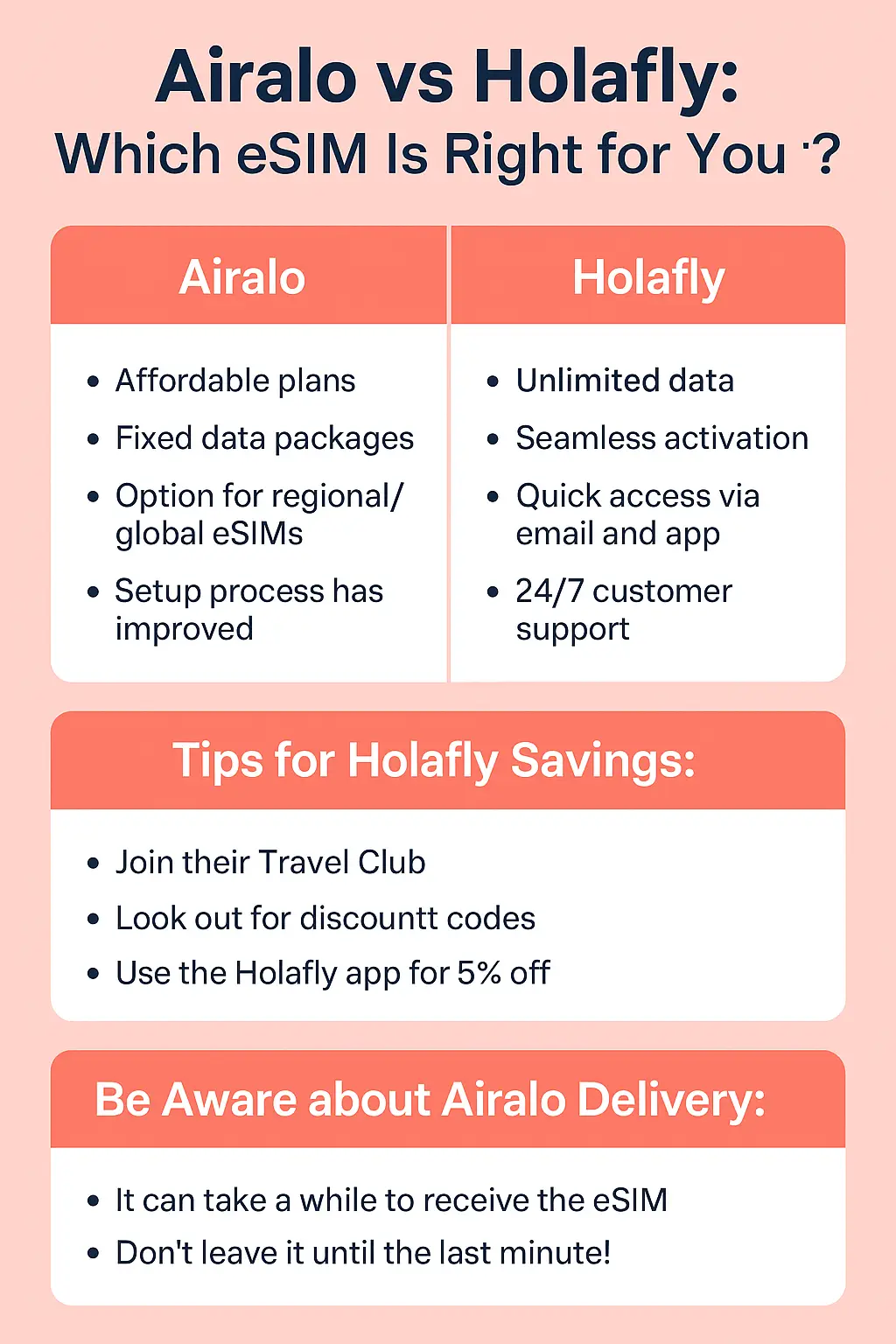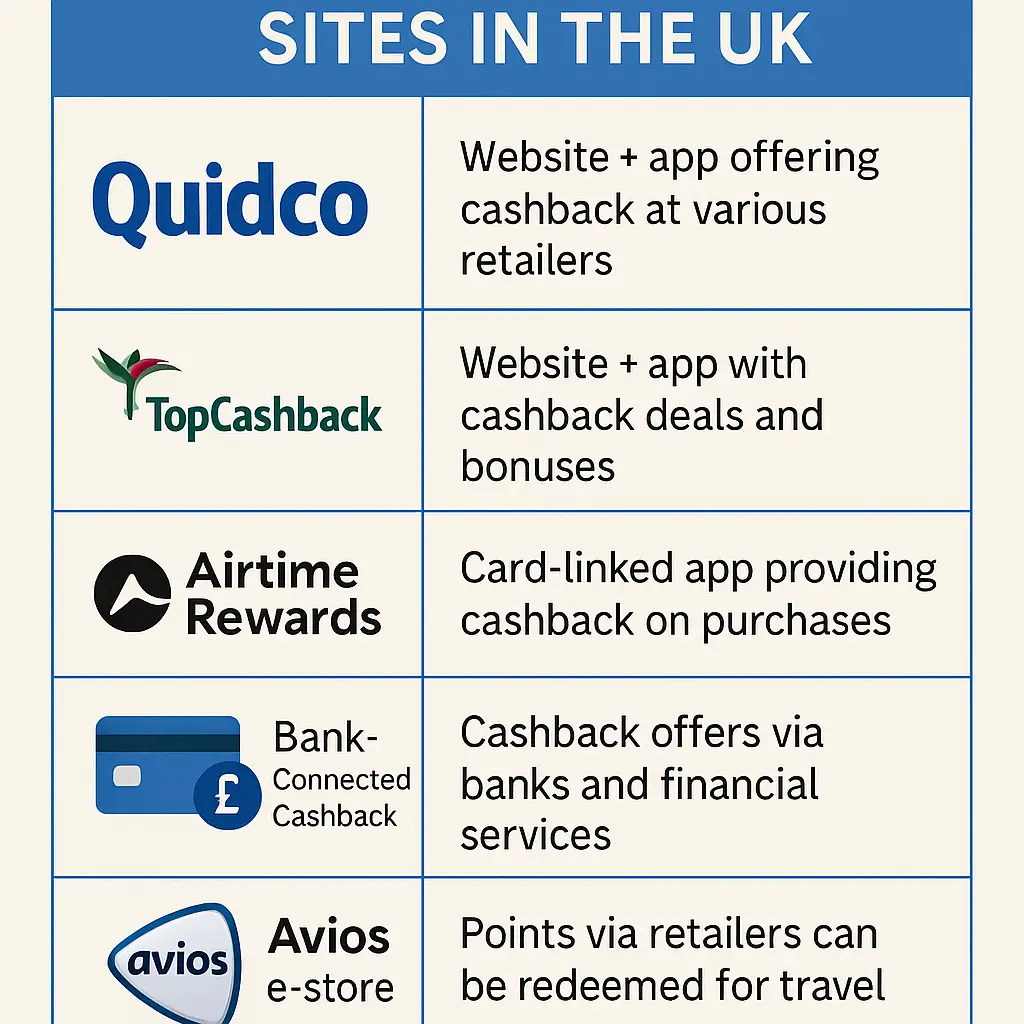Latest News and Articles
See below the list of our latest news and articles from our BLOG on the Einsure website:
Why European Breakdown Cover Is Crucial for Your Summer Holiday Abroad
Planning a summer road trip through Europe in your own car can be a fantastic way to explore the continent — but it’s essential to make sure you’re properly prepared. While travel insurance may be front of mind, European breakdown cover is just as important when it comes to peace of mind on the road.
Without it, a mechanical issue or roadside mishap in another country could lead to costly repairs, delays, or even being stranded — not the kind of holiday memory anyone wants.
Here’s why European breakdown cover is essential, and what else you need to know before driving your car abroad this summer.

The Importance of European Breakdown Cover
Your standard UK breakdown cover typically won’t protect you once you leave the country. European breakdown coveris designed to provide assistance in EU countries (and beyond), covering:
Roadside repairs or recovery
Towing to the nearest garage
Emergency accommodation
Repatriation of your vehicle back to the UK (if necessary)
Onward travel or a replacement vehicle
Without this cover, even a minor fault could result in expensive recovery costs and major disruption to your trip — especially if language barriers or unfamiliar regulations slow things down.
If you’re hiring or subscribing to a vehicle, always check what’s included as part of the package, and consider adding standalone cover if needed.
What You Might Need When Driving in Europe
Planning a road trip across Europe involves more than just booking ferries or mapping out scenic routes. Here are some key legal requirements and helpful extras that could apply when driving through popular destinations such as France, Spain, Germany or Italy.
1. VE103B Certificate (For Leased or Subscribed Vehicles)
If you’re driving a vehicle on a lease or subscription — rather than one registered in your name — you’ll need a VE103B certificate. This document acts as proof that you have permission to take the vehicle abroad and is a legal requirement for travelling in most European countries.
Failing to carry one could result in delays at borders or fines from local authorities.
2. Crit’Air Emissions Sticker (France)
If your holiday route takes you into cities like Paris, Lyon or Grenoble, you may be entering a low-emission zone. France operates the Crit’Air scheme, which requires drivers to display an emissions sticker on their windscreen.
Order it in advance via the official French government site
Fines can apply if you enter restricted zones without it
Even tourists must comply, so don’t assume you’re exempt.
3. Legally Required Equipment (Varies by Country)
Different countries have different laws when it comes to what must be carried in your vehicle. If you’re travelling through France, Spain or Germany, you may need to bring:
Reflective jackets (one per occupant)
Warning triangle(s)
Headlamp beam deflectors
GB or UK sticker (if not shown on your number plate)
First aid kit (required in some countries like Austria or Germany)
Breathalyser kit (still recommended in France)
Always research each country on your route to avoid fines for non-compliance.
4. Travel and Vehicle Insurance
Make sure your UK car insurance covers driving abroad, and check for any time limits (some policies restrict cover to 30 or 60 days abroad per year). You may also want to confirm that the level of cover (e.g. comprehensive) remains the same outside the UK — not all policies guarantee this.
And don’t forget your travel insurance for personal protection while you’re away.

Final Preparations Before You Go
Check your car’s servicing is up to date
Carry physical copies of your documents: driving licence, logbook (V5C), insurance certificate, VE103B if required
Check tyre tread depth and pressure
Load maps or sat nav updates in advance (some areas may lack signal)
Have breakdown contact numbers to hand
Being prepared can help you avoid unnecessary stress and keep your holiday running smoothly from start to finish.
Final Thought
Driving your own car through Europe can be one of the most rewarding ways to explore — but it comes with responsibilities. Having the right European breakdown cover is essential if you want to travel with confidence, knowing that help is just a phone call away should anything go wrong.
For those driving leased or subscription vehicles, don’t forget the VE103B certificate, and be aware of local laws such as emissions zones or mandatory safety gear.
Whether you’re heading to the Riviera, the Alps, or the Spanish coast, take the time to prepare properly. And if you need fully comprehensive insurance for your trip, use Einsure.uk to compare policies and find the right cover for your journey.
Hiring a Car for Your Holiday: Top Tips to Save Money and Avoid Costly Mistakes
Hiring a car can be one of the best ways to explore your holiday destination on your own terms — whether you’re travelling around the UK or heading abroad. But for all the freedom it offers, car hire can come with hidden costs and unnecessary extras if you’re not careful.
At Einsure, we help drivers make smarter choices. So, before you collect the keys, here are some essential tips to help you save money, protect yourself from unexpected charges, and make the most of your trip.

1. Shop Around Before You Book
Before committing to the first car hire company you come across, take a few minutes to compare prices using trusted comparison websites. This allows you to view different rental companies side-by-side, helping you find the most competitive rate for your needs.
You’ll often spot big price differences for the same vehicle class — especially if you’re booking during peak travel seasons. Be sure to compare:
Daily or weekly hire rates
Fuel policy (full-to-full is often the fairest)
Mileage limits
Deposit requirements
A little research up front can make a big difference to your budget.
2. Be Wary of Excess Damage Waiver Add-Ons
One of the most common upsells at the rental desk is the excess damage waiver — an optional insurance that reduces the amount you’d pay in the event of damage or theft. While this might sound reassuring, these policies are often hugely overpriced.
In many cases, you can buy standalone excess insurance from independent providers before your trip, often at a fraction of the cost.
If you don’t want to pay twice as much at the counter, politely decline and ensure you’re properly covered elsewhere. Always read the terms of both your rental agreement and any insurance policy to understand what is and isn’t included.
3. Inspect the Car Thoroughly – Inside and Out
Before driving away, take time to carefully inspect the hire car and document any existing damage. Even minor scratches, scuffs, or dents should be recorded.
Here’s how to do it properly:
Use your phone to take detailed photos of each side of the vehicle, the front, back, roof and wheels
Film a slow walkaround video for extra peace of mind
Don’t forget to check the interior, boot, windscreen, and the car’s underbody/valance
Look on the roof — a commonly missed area where damage may be unfairly blamed on you later
Ensure that any damage is noted on the paperwork before you sign. If the hire desk is busy, still take the time to document everything yourself.
4. Understand the Fuel Policy
Not all fuel policies are created equal. Some companies charge high rates for refuelling, while others may expect you to return the car empty — which usually means you’ll overpay for unused fuel.
Full-to-full is typically the fairest policy: you pick the car up with a full tank and return it the same way. Just remember to keep your fuel receipt in case there are disputes.
If you’re planning a longer stay in the UK — perhaps visiting for work, an extended holiday, or between cars — a short-term car subscription may be a more flexible and cost-effective option than traditional rental.
Subscription-based providers often include:
Road tax
Maintenance and servicing
Monthly rolling contracts with no long-term commitment
Unlike hire cars, subscriptions are designed for personal use over a longer period, often with more flexible mileage and fewer hidden charges. It’s worth comparing both options to see which suits your trip and budget best.
6. Bring the Right Documentation
To avoid delays or cancellation of your booking, make sure you have the required documents:
Your driving licence (check if you need an International Driving Permit)
A credit card in the main driver’s name for the security deposit
Booking confirmation and excess insurance (if bought separately)
ID or passport (especially for international rentals)
Check in advance if the hire company requires a DVLA licence check code — especially for UK rentals.
7. Return the Car on Time and Fully Fuelled
Late returns often lead to full-day charges, even if you’re only a few minutes behind schedule. Aim to return the car well before the agreed time and keep a photo of the fuel gauge to prove you’ve returned it full (if required).
Final Thought
Hiring a car should make your holiday easier, not more stressful. With a bit of preparation — and by avoiding common pitfalls like overpriced excess insurance or undocumented damage — you can enjoy your trip with confidence and clarity.
Compare deals, protect yourself with photos, and avoid unnecessary extras. And remember, for UK-based car insurance comparisons, Einsure.uk is here to help you find the best value every time.
How Different Factors Can Affect Car Insurance Premiums
When searching for car insurance, you may wonder why one person pays significantly more – or less – than another, even if their cars seem similar. The truth is, car insurance premiums are calculated based on a wide range of factors, many of which are specific to the individual driver.
At Einsure, we’re committed to helping you understand how your quotes are calculated, so you can make informed decisions and potentially reduce your costs. Below are some of the key factors that influence how much you pay for your car insurance.

1. Your Age and Driving Experience
Age can play a major role in determining insurance premiums. Statistically, younger and less experienced drivers are more likely to be involved in accidents, which means they typically face higher premiums. Drivers under 25 often pay the most, while older, more experienced drivers with a clean record tend to pay less.
Even if you’re older but newly licensed, insurers may still classify you as high risk until you build up a driving history.
2. Your Driving History and Claims Record
Insurers assess your risk by reviewing your past. If you have a history of claims, accidents or motoring convictions, your premium will likely be higher. Conversely, if you have a clean driving record and a history of no claims, you may qualify for a No Claims Discount (NCD), which can significantly reduce your insurance costs over time.
It’s essential to be honest when declaring previous incidents – failing to do so can invalidate your policy.
3. Where You Live and Park Your Vehicle
Your postcode can affect your premium more than you might expect. Insurers consider factors such as local crime rates, traffic congestion, and accident statistics when calculating risk. For example, living in a busy city or an area with high rates of vehicle theft might increase your premium compared to living in a quieter rural location.
Where you park your car overnight – whether on the street, in a driveway or in a locked garage – also influences your rate. Secure parking generally reduces your risk and can result in lower premiums.
4. The Type of Car You Drive
The make, model and value of your car all impact your insurance cost. Cars are categorised into insurance groups (1–50), with group 1 being the cheapest to insure and group 50 the most expensive. High-performance vehicles, luxury cars or models with costly parts are typically more expensive to cover.
Modifications, even cosmetic ones, can also increase your premium, as they may affect the car’s value, performance or theft risk.
5. Your Annual Mileage
The more you drive, the higher the chance you’ll be involved in an accident. That’s why your estimated annual mileageaffects your insurance premium. If you use your vehicle daily for long commutes, you’re likely to pay more than someone who only drives occasionally.
That said, underestimating your mileage to try and reduce your quote could invalidate your insurance, so it’s important to be accurate.
6. Your Job Title and Employment Status
Insurers use your occupation to help assess risk. Certain professions are statistically associated with higher risk – for example, delivery drivers or entertainers may pay more than office workers.
Your job title can make a difference, even when duties are similar. Tools such as MoneySavingExpert’s job picker can help you find the most cost-effective but honest way to describe your role.
7. The Level of Cover You Choose
There are three main types of car insurance cover:
-
Third-party only – covers damage to other vehicles, but not your own.
-
Third-party, fire and theft – adds protection if your car is stolen or damaged by fire.
-
Comprehensive – covers you and your vehicle, even if you’re at fault.
While third-party cover is the legal minimum, comprehensive insurance is not always the most expensive, and it can offer better value depending on your circumstances.
8. Your Voluntary Excess
Excess is the amount you agree to pay towards a claim. The higher the voluntary excess you choose, the lower your premium may be. However, you must make sure it’s an amount you could afford to pay out of pocket if you need to make a claim.
How Einsure Can Help
With so many factors affecting your premium, the best way to find a good deal is to compare quotes across multiple providers. Einsure’s comparison tool allows you to:
-
Enter your details once
-
View quotes from a range of trusted UK insurers
-
Tailor your cover based on your personal needs
-
See how small changes affect your premium in real time
Whether you’re a new driver, renewing your policy or looking to switch providers, Einsure helps you make confident, informed decisions.
Final Thought
Car insurance premiums aren’t one-size-fits-all. By understanding the factors that influence your quote and using a reliable comparison tool like Einsure, you can take control of your policy and potentially save money.
Start comparing today and see how much you could save.
Airalo vs Holafly: The Best eSIM Option for Smart, Connected Travel
Staying connected while travelling is no longer just a convenience — it’s essential. Whether you’re accessing travel insurance documents, calling for roadside assistance, or simply navigating unfamiliar streets, mobile data is critical.
eSIM technology has made it easier than ever to get online without swapping out physical SIM cards. Two of the most trusted names in the eSIM market today are Airalo and Holafly. But which is better for your next trip?
At Einsure, we’ve done the homework for you. Here’s what sets each service apart, who they’re best suited for, and a few expert tips to maximise value.
🔍 Quick Comparison: Holafly vs Airalo
| Feature | Airalo | Holafly |
|---|---|---|
| Data Type | Fixed GB (1GB–20GB) | Unlimited data in most regions |
| Price Range | 💸 Lower | 💰 Moderate |
| eSIM Activation | ⏳ Can be delayed | ⚡ Instant via app, email & WhatsApp |
| App Experience | 📱 Improving | 📱 Smooth and intuitive |
| Support | In-app, email | 24/7 via WhatsApp, app, and email |
| Best For | Budget-conscious, light users | Heavy users, long stays, business |
💡 Why Choose Airalo?
Airalo is ideal for travellers who are mindful of their data usage and looking for an affordable, no-frills solution. With options starting at just a few dollars, you can pick from regional or country-specific plans.
✅ Pros:
Extremely cost-effective
Wide availability across 190+ countries
Perfect for short trips or casual usage
Simple dashboard to track usage
❌ Cons:
Delivery of eSIM details can take time
Previously had a clunky setup, though it’s now improved
No unlimited data, so usage must be monitored
Einsure Insight: If you’re using eSIM just for maps, emails, and insurance access — Airalo gives you what you need without overspending.
🔥 Why Choose Holafly?
Holafly offers a more premium, worry-free experience. With unlimited data in most countries (including the UK, Europe, and the U.S.), it’s perfect for travellers who stream, work remotely, or don’t want to deal with data caps.
✅ Pros:
Truly unlimited data — no daily limits
Lightning-fast setup via app, email, and even WhatsApp
Seamless activation — just tap and install
Outstanding customer support, 24/7
Join the Travel Club to earn Holapoints (loyalty rewards)
❌ Cons:
Slightly higher pricing than Airalo
Tethering/hotspot not allowed on unlimited plans
Einsure Insight: For longer trips, family travel, or business abroad, Holafly removes the stress of running out of data.

✈️ Pro Tips for Getting More from Holafly
Install the Holafly app: You’ll get an automatic 5% discount.
Join the Travel Club: Earn Holapoints with every purchase to use as discounts later.
Buy one eSIM, then wait: You’ll often receive an email discount code (5–10%) for future orders. Great for multi-country trips.
⚠️ Important Notes for Airalo Users
eSIM activation can take up to 30 minutes — don’t leave it until the airport lounge.
The installation process is easier now, but you should still install while connected to reliable Wi-Fi.
Take a screenshot of your eSIM details in case you lose app access.
✅ Final Verdict: Which One is Right for You?
If you’re:
A budget traveller
On a short city break
Planning to use only light data
👉 Go with Airalo — it’s affordable and simple.
If you:
Need unlimited data
Stream or work remotely
Travel for longer periods
👉 Go with Holafly — the convenience and unlimited data is worth the few extra pounds.
🙋♀️ FAQs – eSIM Essentials
What’s better for unlimited data: Airalo or Holafly?
Holafly. Airalo does not offer unlimited data plans.
Can I install an eSIM before travelling?
Yes — and you should. Holafly even lets you install directly via their app or email, so you’re connected the moment you land.
Can I use my regular SIM card at the same time?
Yes, modern phones support dual SIM. Use your eSIM for data and your physical SIM for calls/texts.
How do I save money on Holafly?
Install the app for 5% off, join the Travel Club for Holapoints, and wait for post-purchase emails that often include 5–10% discount codes.
What should I watch out for with Airalo?
Airalo is reliable, but eSIM delivery can be slow. Set it up early and ensure you’re on Wi-Fi during installation.
The Best Cashback Sites & Services in the UK
In an age of rising costs and smart spending, cashback websites have become a go-to tool for savvy shoppers across the UK. Whether you’re booking travel, buying groceries, or shopping online, there are plenty of ways to earn a little something back each time you spend. In this guide, we’ll explore the top cashback platforms, including website-based services like Quidco and TopCashback, app-based options such as Airtime Rewards, and even bank-integrated and points-based alternatives like Revolut and Avios.
What Is a Cashback Site?
A cashback site allows you to earn money back on purchases you make online (and sometimes in-store). Instead of going directly to a retailer, you shop via a cashback platform. The site earns a commission from the retailer for referring you—and then passes a portion of that back to you.
Top UK Cashback Services
Here are three of the best Cashback websites in the UK:
Quidco
One of the UK’s most popular and long-standing cashback sites, Quidco offers thousands of deals across fashion, utilities, insurance, travel, and more.
How it works: Register for free, shop via their website or app, and cashback is tracked and credited once the purchase is confirmed.
In-store cashback: Link your card and earn when spending at participating retailers.
Premium membership: Optional upgrade offers higher cashback rates and exclusive deals.
TopCashback
TopCashback is a close rival to Quidco and often offers slightly higher rates for certain retailers.
Features: Works almost identically to Quidco—via website, app, or browser extension.
Snap & Save: Upload receipts from physical stores to earn cashback even when shopping offline.
Memberships: Choose between a free Classic account or a paid Plus version (which adds cashback bonuses and higher payouts).
AirTime Rewards
This app takes a fresh approach to cashback. By linking your debit or credit card, you automatically earn cashback when shopping with partnered brands—and it’s paid directly toward your mobile bill.
Effortless earning: No need to click through; just spend as normal.
Mobile benefit: Cashback goes toward reducing your phone bill with most major UK networks.
Brands featured: Boots, Greggs, Wilko, Papa John’s, and more.
Cashback from Banks & Cards
Revolut
Revolut, a digital banking app, offers cashback for premium users when they spend using their card—particularly while travelling abroad. Some spending categories and retailers even offer higher rates.
Traditional Banks
A number of high-street banks also offer cashback through your current account:
Santander Edge: 1% cashback on groceries, fuel, and bills.
Barclays Blue Rewards: Cashback on selected household services.
Chase UK: Cashback of 1% on all spending for the first 12 months.
These are ideal for anyone looking to earn automatically without needing to shop via a separate website or app.
Looking to Travel? Try Avios for Points Instead of Cash
The Avios eStore allows you to collect Avios points when you shop with hundreds of well-known retailers. While you don’t earn money back, you build up points that can be used for flights, upgrades, hotel stays, and car hire with partners like British Airways and Iberia.
How it works: Similar to cashback sites—click through the Avios site to your chosen retailer, make a purchase, and points will be added to your Avios account.
Ideal for: Frequent travellers or those looking to offset travel costs.
Tips to Maximise Cashback Earnings
Compare rates: Check both Quidco and TopCashback—rates often differ between them.
Use browser extensions: These will remind you when cashback is available as you browse.
Stack rewards: Pay with a cashback debit/credit card or use linked bank offers alongside cashback sites.
Don’t forget receipts: Use features like Snap & Save to earn cashback on in-store purchases.
Track claims: Occasionally, cashback doesn’t track correctly. Take screenshots and raise a claim if needed.
Quick Cashback Comparison Table
| Cashback Method | Format | Best For | Bonus Feature |
|---|---|---|---|
| Quidco | Website/App | Variety of online retailers | In-store cashback & Premium deals |
| TopCashback | Website/App | High cashback rates | Snap & Save + Plus membership |
| Airtime Rewards | Card-linked App | Everyday spending | Pays off mobile phone bills |
| Revolut | Bank Card/App | Travel and global spending | Cashback with premium tiers |
| Avios eStore | Points System | Flights and holidays | Airmiles through everyday shops |
Final Thoughts
Using cashback services is a smart way to reduce your spending and make your money go further. Whether you prefer websites like Quidco and TopCashback, the effortless style of Airtime Rewards, or points-based programs like Avios, there’s a cashback model to suit nearly everyone.
Here at einsure, we always recommend taking full advantage of these tools—especially when combined with a cashback-friendly credit card or rewards account. You’re spending the money anyway, so why not earn some of it back?


